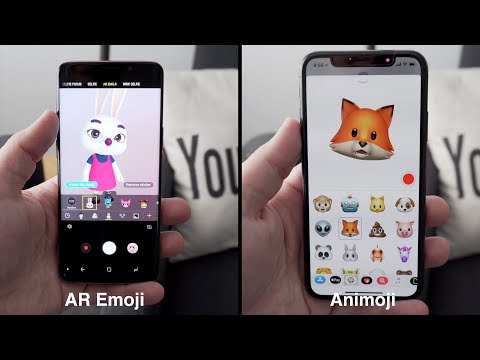Samsung's "AR Emoji" vs Apple's "Animoji"

With its new Galaxy S9 and S9+, Samsung debuted AR Emoji, a feature that mimics Animoji, the animated emoji characters that Apple introduced alongside the iPhone X.
In our latest YouTube video, we compared Samsung's new AR Emoji on the Galaxy S9 to Apple's Animoji on the iPhone X to check out the similarities and differences between the two features.
Apple's Animoji are enabled through the TrueDepth camera system, which is Apple's 3D facial recognition feature that maps out a user's facial features. The TrueDepth camera analyzes more than 50 muscle movements in different areas of the face for Animoji, detecting movement of the eyebrows, cheeks, chin, eyes, jaw, lips, eyes, and mouth to create super realistic representations of facial expressions.
Samsung's AR Emoji, while similar to Animoji, don't have the same kind of underlying technology powering them, so the facial expressions AR Emoji can replicate are far more rudimentary. While Animoji on the iPhone X can mimic subtle expressions, on the Galaxy S9, AR Emoji have trouble with anything that isn't exaggerated, better recognizing movements like a blink or an open mouth than something more subtle like a wink or an angry face.
There are a limited number of Animoji available, though, and that's where Samsung has Apple beat. There are more AR Emoji character options to work with, and in fact, you can even create a custom Bitmoji-style character modeled after your own face.
Characters can be customized with unique facial features, clothing, skin tone, and more, plus your recordings with AR Emoji aren't limited to 10 seconds -- you can record for as long as you want. You can also add stickers, and there are Bitmoji-like pre-made GIFs to send to people.
All in all, AR Emoji seems to have more in common with Snapchat than with Animoji. Those aforementioned stickers are similar to the Snapchat filters that let you add sunglasses, cute animal faces, and more to your own face and can't be compared to anything offered natively by Apple.
It's worth noting that third-party apps like Snapchat on iPhone X can also take advantage of the TrueDepth camera for filters that better fit the face, while on Samsung devices, Snapchat filters and AR Emoji stickers look much less natural.
As is typical, Samsung wins out in customizability, but Apple has the edge when it comes to the underlying technology. What do you think of AR Emoji compared to Animoji? Let us know in the comments.